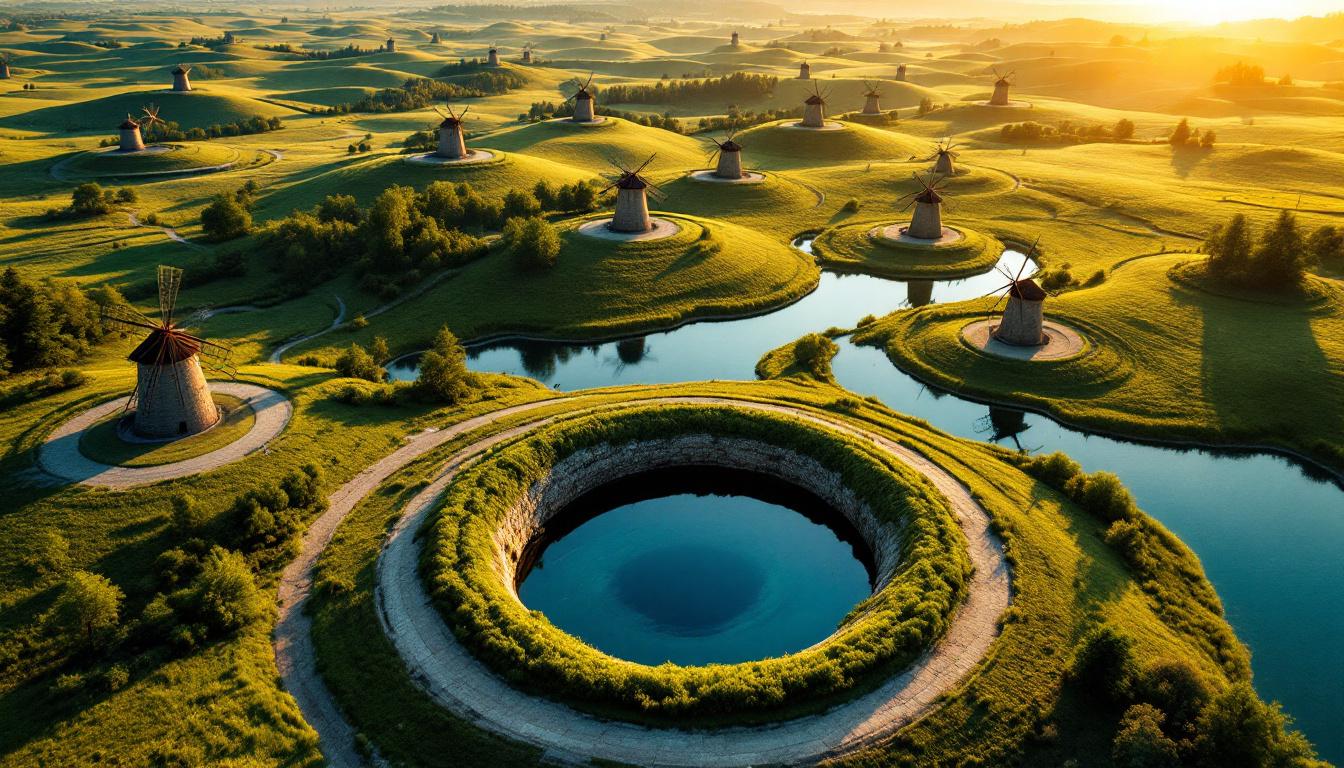Tallinn’s Old Town drowns in 3.18 million annual visitors, with hotel rates surging while authentic culture gets buried under cruise ship crowds and Airbnb takeovers. The medieval charm you’re seeking exists just 150 kilometers away on Estonia’s largest island, where meteorite craters older than civilization and landscapes dotted with 800+ windmills await discovery.
Saaremaa remains Estonia’s best-kept secret, accessible only by ferry across the Baltic Sea. While Tallinn battles overtourism and inflated prices, this island paradise offers accommodation costs 50% lower and experiences that haven’t been commercialized by mass tourism.
The ferry journey itself filters out casual day-trippers, creating an exclusive gateway to authentic Estonian island culture that locals have protected for centuries.
Why Tallinn disappoints authentic culture seekers
Overcrowded medieval streets lose their magic
Tallinn’s Old Town transforms into a medieval theme park during peak season, with record-breaking overnight stays cramming narrow cobblestone streets. Restaurant terraces overflow with tour groups following umbrella-wielding guides, while authentic Estonian restaurants get replaced by generic European fare targeting mass tourism.
Rising costs squeeze out genuine experiences
Hotel profits plummet despite visitor increases, forcing accommodations to cut services while raising prices. The VAT increases and inflation that closed beloved venues like Sveta Club demonstrate how overtourism destroys the very culture visitors seek to experience.
Saaremaa’s meteorite craters create otherworldly wonder
Kaali crater complex offers rare geological access
Nine meteorite impact craters formed 4,000 years ago create one of Europe’s most accessible cosmic collision sites. The largest crater, 110 meters wide, holds a sacred lake where ancient Estonians believed gods descended to earth, creating myths that local guides still share with reverence.
Archaeological discoveries reveal ancient civilizations
Recent excavations around Kaali craters uncovered Bronze Age settlements and sacrificial sites, suggesting this meteorite impact shaped human civilization on the island. Unlike crowded museum displays in Tallinn, you can walk the crater rims where our ancestors first witnessed celestial fire.
Eight hundred windmills dot pastoral landscapes
Traditional windmills preserve island heritage
Saaremaa’s distinctive stone windmills create Estonia’s most photographed landscapes, with concentrations around Angla village offering panoramic views impossible in urban Tallinn. These aren’t tourist reconstructions—many still grind grain using centuries-old mechanisms maintained by local families.
Windmill villages maintain authentic rural life
Unlike Tallinn’s commercialized attractions, Saaremaa’s windmill clusters exist within working agricultural communities where traditional crafts, seasonal festivals, and Estonian rural dialects survive untouched by mass tourism. Local millers demonstrate ancient techniques while sharing stories passed down through generations.
Island exclusivity creates authentic cultural immersion
Ferry access limits overtourism naturally
The three-hour ferry journey from mainland Estonia acts as a natural filter, eliminating cruise ship day-trippers and Instagram tourists seeking quick shots. This maritime barrier preserves island rhythms where locals still practice traditional saunas, folk singing, and seasonal celebrations without performing for cameras.
Cost savings fund deeper cultural experiences
Accommodation averaging €30-50 per night versus Tallinn’s €100+ rates allows budget for private windmill tours, meteorite crater guided walks, and traditional Estonian island cooking classes. Local guesthouses run by farming families offer insights into island life impossible in commercial hotels.
Planning your authentic Estonian island escape
When should I visit Saaremaa for the best experience?
July through September offers optimal weather for crater hiking and windmill exploration, with 18+ hours of daylight and traditional harvest festivals showcasing authentic island culture.
How do I reach Saaremaa from Tallinn?
Regular ferries depart from Virtsu port (90 minutes from Tallinn) with crossing times of 25 minutes to Muhu island, then a short bridge drive to Saaremaa. Advanced booking recommended during summer peak season.
What makes Saaremaa’s meteorite craters unique globally?
Kaali represents one of only 190 confirmed meteorite impact sites worldwide, with the rare combination of accessibility, preservation, and ongoing archaeological significance making it incomparable to typical geological attractions.
Are the windmills still functional or just tourist displays?
Many of Saaremaa’s windmills remain working heritage sites grinding local grain, with traditional mechanisms maintained by families who’ve operated them for generations, offering authentic experiences beyond typical museum visits.
Saaremaa proves that Estonia’s most profound cultural treasures exist beyond Tallinn’s crowded medieval walls. This island sanctuary rewards travelers seeking authentic Nordic culture with exclusive access to meteorite mysteries and windmill-dotted landscapes that define true Estonian heritage.
